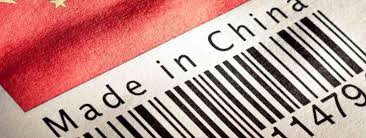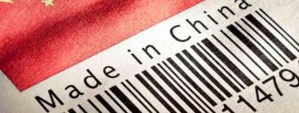Despite the general slowdown in China’s economy, the country’s October factory activity had grown at the fastest rate since February of 2017, showed a private survey in the country.
According to a joint press release by Caixin and IHS Markit released on Friday, for the month of October, the value of the Caixin/Markit manufacturing Purchasing Managers’ Index (PMI) was at 51.7 as there was fast paced expansion in both production and new orders along with a “renewed increase in export business.”
For the month of September, the PMI number was expected to come in at 51.0 from 51.4 according to analysts polled by Reuters. Expansion is said to have occurred if the PMI readings are above 50 while contraction is said to have happened of the value is lower than 50.
“Both domestic and foreign demand improved substantially,” said Zhengsheng Zhong, director of macroeconomic analysis at Caixin subsidiary CEBM Group.
“The subindex for new orders stayed in positive territory and rose to the highest level since January 2013. The gauge for new export orders returned to expansionary territory and reached the highest point since February 2018, due likely to the U.S.′ move to exempt more than 400 types of Chinese products from additional tariffs,” Zhong wrote in the press release.
Zhong however said that “business confidence has been weak” because of a cautionary approach towards replenishing inventories even though the growth in the rate of new orders with companies was the fastest since the trade war with the United States had begun about 15 months ago. There was also a contraction in the labor market.
The official manufacturing data however was in stark contrast to the results of the private survey. According to the official survey that was released on Thursday, there was contraction in the factory activity in China for the sixth straight month for October.
A large proportion of big businesses and state-owned enterprises are usually polled for the official PMI survey. However a greater mix of small- and medium-sized companies was included in the Caixin indicator.
Julian Evans-Pritchard, senior China economist at Capital Economics, who was skeptical about the data by the private survey, it is difficult to gauge how the Chinese economy performed at the start of fourth quarter in China because of the differences in the results of the official and private surveys.
“Historically, the Caixin index has been the more reliable guide to cyclical fluctuations in China’s economy ... On balance, it therefore seems most likely that growth continued to pick up last month,” Evans-Pritchard wrote in a note on Friday. “That said, we doubt that activity will be as strong as the Caixin index implies. One reason to be skeptical is that industrial metal prices have only seen very modest gains recently,” he added.
The manner in which businesses view the operating environment is reflected by the PMI. It also fives an initial glimpse into the state of an economy because those are typically among the first major economic indicators that are made public every month.
(Source:www.cnbc.com)
According to a joint press release by Caixin and IHS Markit released on Friday, for the month of October, the value of the Caixin/Markit manufacturing Purchasing Managers’ Index (PMI) was at 51.7 as there was fast paced expansion in both production and new orders along with a “renewed increase in export business.”
For the month of September, the PMI number was expected to come in at 51.0 from 51.4 according to analysts polled by Reuters. Expansion is said to have occurred if the PMI readings are above 50 while contraction is said to have happened of the value is lower than 50.
“Both domestic and foreign demand improved substantially,” said Zhengsheng Zhong, director of macroeconomic analysis at Caixin subsidiary CEBM Group.
“The subindex for new orders stayed in positive territory and rose to the highest level since January 2013. The gauge for new export orders returned to expansionary territory and reached the highest point since February 2018, due likely to the U.S.′ move to exempt more than 400 types of Chinese products from additional tariffs,” Zhong wrote in the press release.
Zhong however said that “business confidence has been weak” because of a cautionary approach towards replenishing inventories even though the growth in the rate of new orders with companies was the fastest since the trade war with the United States had begun about 15 months ago. There was also a contraction in the labor market.
The official manufacturing data however was in stark contrast to the results of the private survey. According to the official survey that was released on Thursday, there was contraction in the factory activity in China for the sixth straight month for October.
A large proportion of big businesses and state-owned enterprises are usually polled for the official PMI survey. However a greater mix of small- and medium-sized companies was included in the Caixin indicator.
Julian Evans-Pritchard, senior China economist at Capital Economics, who was skeptical about the data by the private survey, it is difficult to gauge how the Chinese economy performed at the start of fourth quarter in China because of the differences in the results of the official and private surveys.
“Historically, the Caixin index has been the more reliable guide to cyclical fluctuations in China’s economy ... On balance, it therefore seems most likely that growth continued to pick up last month,” Evans-Pritchard wrote in a note on Friday. “That said, we doubt that activity will be as strong as the Caixin index implies. One reason to be skeptical is that industrial metal prices have only seen very modest gains recently,” he added.
The manner in which businesses view the operating environment is reflected by the PMI. It also fives an initial glimpse into the state of an economy because those are typically among the first major economic indicators that are made public every month.
(Source:www.cnbc.com)






